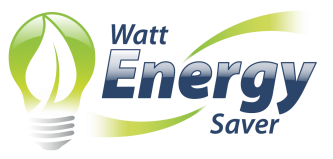At Watt Energy Saver, we specialise in navigating the complexities of connecting solar arrays to the UK's electrical grid, particularly under the G99 and G100 processes. Our expertise often enables us to secure connections for our clients where others may not succeed.
G99 and G100 Process for Solar Arrays
The G99 and G100 processes are essential for the connection of solar arrays to the UK grid. These procedures ensure that the solar systems are compatible with the network and do not adversely affect its operation.
Overcoming Common Challenges
Our team at Watt Energy Saver has extensive experience in addressing the common challenges associated with these processes, such as:
High Connection Charges
Due to varying network capacities and regional differences, connection charges can be substantial. Our team works closely with clients and District Network Operators (DNOs) to find pragmatic and cost-effective solutions.
Voltage Rise
Solar arrays can sometimes cause voltage levels to rise, especially during periods of low demand and high PV generation in the summer. DNOs are obligated to maintain voltage within a specific range (230V +/- 10%) under the Electricity Safety, Quality and Continuity Regulations (ESQCR). Our expertise ensures compliance with these regulations.
Thermal Capacity
The capacity of existing network infrastructure like cables, switchgear, and transformers to handle the power generated by solar arrays is a critical consideration. We specialize in assessing and addressing these capacity issues, especially in scenarios involving large-scale or stand-alone solar systems.
Fault Load Current
With increasing solar connections, fault level impacts have become a significant concern. These fault levels refer to the current that network components can withstand in emergencies. We work on solutions that involve network system upgrades and careful assessment of the impact of solar arrays on fault levels.
Addressing Grid Capacity Issues
A notable challenge is grid capacity being occupied by speculative developers. This situation often leads to increased connection costs and complexities.
Our approach to these challenges involves a deep understanding of the technical aspects, strong relationships with DNOs, and innovative solutions that align with both client needs and regulatory requirements. At Watt Energy Saver, we are committed to delivering successful solar array connections, making renewable energy more accessible and viable for our clients.
Get in touch with us here at Watt Energy Saver or by using our Contact Form by providing some information about your project. Our engineers will be very happy to help you start this dialogue with your local DNO for any potential commercial PV installation.
G99 and G100 Process for Solar Arrays
The G99 and G100 processes are essential for the connection of solar arrays to the UK grid. These procedures ensure that the solar systems are compatible with the network and do not adversely affect its operation.
Overcoming Common Challenges
Our team at Watt Energy Saver has extensive experience in addressing the common challenges associated with these processes, such as:
High Connection Charges
Due to varying network capacities and regional differences, connection charges can be substantial. Our team works closely with clients and District Network Operators (DNOs) to find pragmatic and cost-effective solutions.
Voltage Rise
Solar arrays can sometimes cause voltage levels to rise, especially during periods of low demand and high PV generation in the summer. DNOs are obligated to maintain voltage within a specific range (230V +/- 10%) under the Electricity Safety, Quality and Continuity Regulations (ESQCR). Our expertise ensures compliance with these regulations.
Thermal Capacity
The capacity of existing network infrastructure like cables, switchgear, and transformers to handle the power generated by solar arrays is a critical consideration. We specialize in assessing and addressing these capacity issues, especially in scenarios involving large-scale or stand-alone solar systems.
Fault Load Current
With increasing solar connections, fault level impacts have become a significant concern. These fault levels refer to the current that network components can withstand in emergencies. We work on solutions that involve network system upgrades and careful assessment of the impact of solar arrays on fault levels.
Addressing Grid Capacity Issues
A notable challenge is grid capacity being occupied by speculative developers. This situation often leads to increased connection costs and complexities.
Our approach to these challenges involves a deep understanding of the technical aspects, strong relationships with DNOs, and innovative solutions that align with both client needs and regulatory requirements. At Watt Energy Saver, we are committed to delivering successful solar array connections, making renewable energy more accessible and viable for our clients.
Get in touch with us here at Watt Energy Saver or by using our Contact Form by providing some information about your project. Our engineers will be very happy to help you start this dialogue with your local DNO for any potential commercial PV installation.

